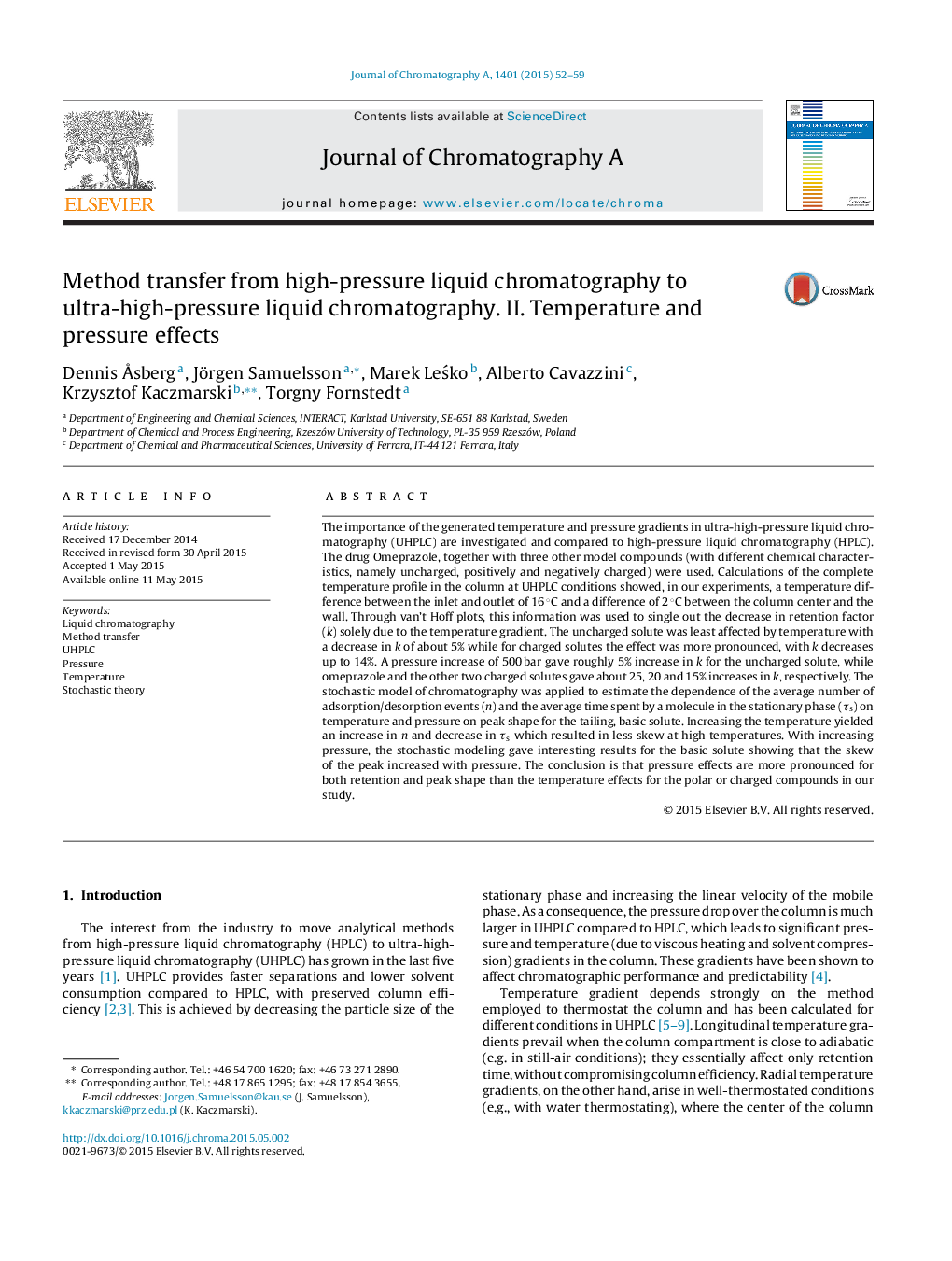| کد مقاله | کد نشریه | سال انتشار | مقاله انگلیسی | نسخه تمام متن |
|---|---|---|---|---|
| 1199270 | 1493525 | 2015 | 8 صفحه PDF | دانلود رایگان |
• Temperature and pressure gradients were studied in UHPLC using HPLC as reference.
• Axial temperature gradients reached 16 °C and the radial gradient 2 °C in UHPLC.
• The stochastic model was used to evaluate temperature and pressure effects.
• Pressure effects are more pronounced and have larger impact than temperature effects.
• Pressure effects have much more impact on charged compounds as compared to neutrals.
The importance of the generated temperature and pressure gradients in ultra-high-pressure liquid chromatography (UHPLC) are investigated and compared to high-pressure liquid chromatography (HPLC). The drug Omeprazole, together with three other model compounds (with different chemical characteristics, namely uncharged, positively and negatively charged) were used. Calculations of the complete temperature profile in the column at UHPLC conditions showed, in our experiments, a temperature difference between the inlet and outlet of 16 °C and a difference of 2 °C between the column center and the wall. Through van’t Hoff plots, this information was used to single out the decrease in retention factor (k) solely due to the temperature gradient. The uncharged solute was least affected by temperature with a decrease in k of about 5% while for charged solutes the effect was more pronounced, with k decreases up to 14%. A pressure increase of 500 bar gave roughly 5% increase in k for the uncharged solute, while omeprazole and the other two charged solutes gave about 25, 20 and 15% increases in k, respectively. The stochastic model of chromatography was applied to estimate the dependence of the average number of adsorption/desorption events (n) and the average time spent by a molecule in the stationary phase (τs) on temperature and pressure on peak shape for the tailing, basic solute. Increasing the temperature yielded an increase in n and decrease in τs which resulted in less skew at high temperatures. With increasing pressure, the stochastic modeling gave interesting results for the basic solute showing that the skew of the peak increased with pressure. The conclusion is that pressure effects are more pronounced for both retention and peak shape than the temperature effects for the polar or charged compounds in our study.
Journal: Journal of Chromatography A - Volume 1401, 3 July 2015, Pages 52–59
